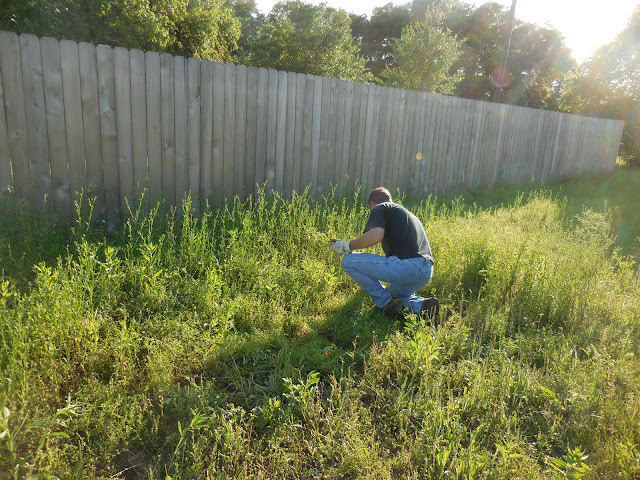
Yesterday, we spent the evening after supper pulling pulling pulling Malta star-thistle in our neighborhood. In hopes of inspiring others to monitor their own land, I made a post on Facebook, which basically said: "We'd like you all in Blanco to recognize this
invasive along your own streets and properties so you, too, can pull it
and keep it OUT of Blanco. It's like that awful bastard cabbage that's
taking over the Hill Country, only not showy AT ALL. It has small
bristly yellow flowers that you can hardly see, and it blends in well
with its surroundings. For one and half hours worth of work, we got a
lot yanked out. Now we've just got to go back and bag up the evil
thistles."
I had some nice comments back, and I'm going to do at least one home visit to check for Malta star-thistle.
In the meantime, here's a good source: "Field Guide for Managing Malta Starthistle in the Southwest."
I also asked Ricky Linex, a
wildlife biologist with the Natural Resources Conservation Service in
Weatherford, about controlling large investations of this invasive species. Here's what he emailed back:
"We are at the
very end of the practical time frame for spraying this year. It should
be done during late winter when the rosettes are first noticed. I’d be
concerned if you sprayed now and had wildflowers the chemical would kill
them as well. But in areas where the thistle
dominates spraying wouldn’t hurt many other plants. What can be done
now is hand treatment or mowing and bagging. This
is like many weed problems, they don’t become a real concern to many
until it is too late to easily control them by chemicals."
Personally, I don't like or use chemicals. But then, we're not coping with a huge infestation like some people are.




 |
| There's a second pile of star-thistle way back behind James. |
2 comments:
The first year we moved onto our property, we started pulling, digging the star...it helped so much. Also the first year, hubby dug, chopped the other thistle that is taking over the roadways and pastures. It does have a pretty (color) bloom, but it will soon choke out the grass and flowers. I don't know what the name is, but it has a purple globe bloom. After 4 years, we only have a few each summer, but the neighbors have many.
I bet you're talking about musk thistle (Carduus nutans). Yuck. Texas thistle, which has a purple bloom, too, has a "cup" beneath the bloom. I just read that the other day. Easy way to distinguish from bad musk thistle.
Post a Comment